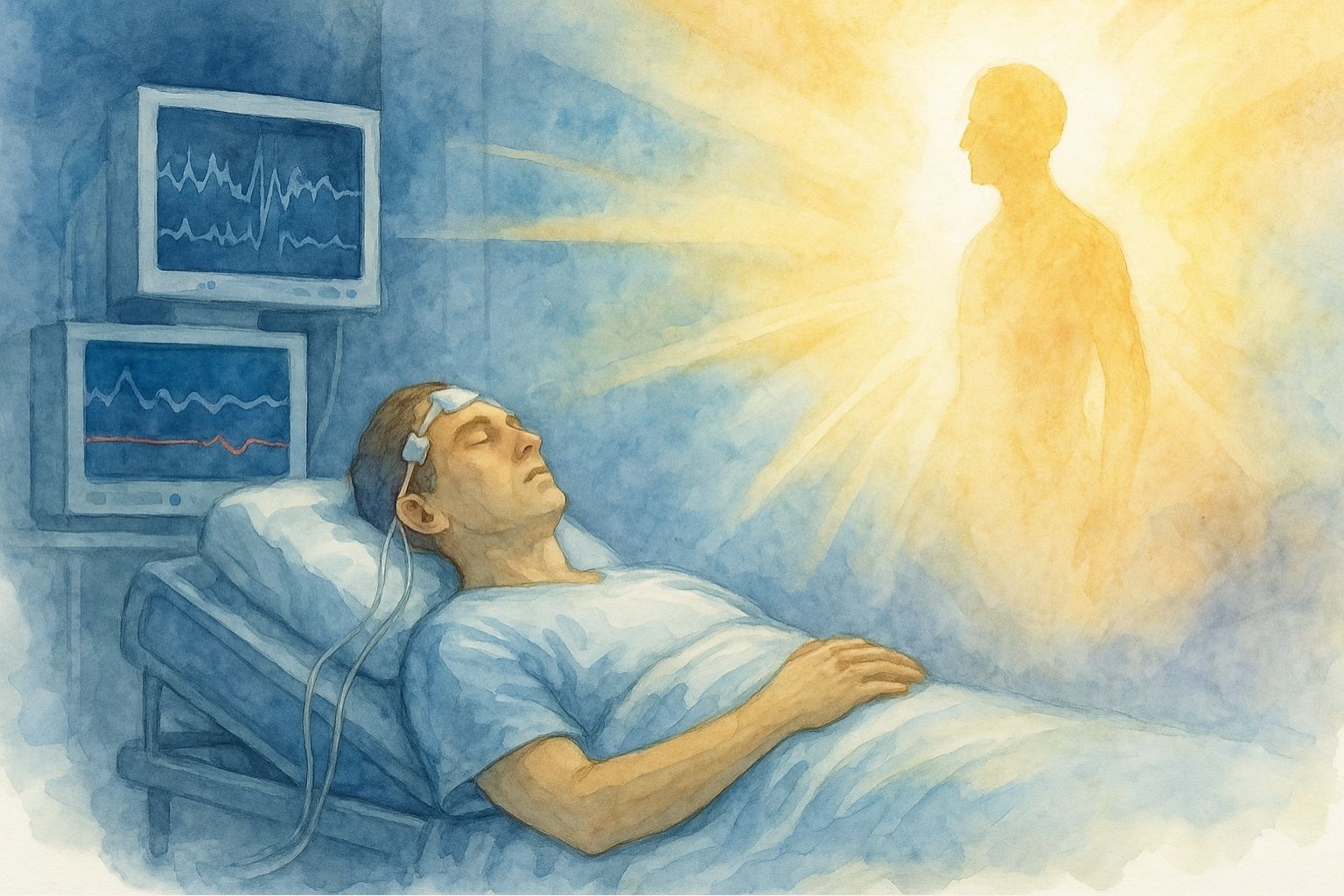|
Getting your Trinity Audio player ready...
|
Resumo: O texto discute um estudo de caso que analisou a atividade elétrica cerebral de pacientes em fase terminal, usando o índice biespectral (BIS) e o SedLine. A pesquisa de Chawla (2009) revelou picos anômalos de atividade cerebral após a parada cardíaca, sugerindo um possível “clarão de consciência” momentos antes da morte definitiva. Embora os autores considerem outras explicações, a hipótese de correlação com experiências de quase-morte é levantada, mas requer mais investigação. Finalmente, o texto compara os achados científicos com uma descrição espiritual da morte, apresentada na obra “Obreiros da Vida Eterna”, destacando a diferença de abordagens entre a ciência e a espiritualidade sobre o tema.
Palavras-chaves: atividade elétrica cerebral, fase terminal, clarão de consciência, experiências de quase-morte, ciência e espiritualidade
Abstract: The text discusses a case study that analyzed the brain electrical activity of terminally ill patients, using the bispectral index (BIS) and SedLine. Chawla’s research (2009) revealed anomalous peaks of brain activity after cardiac arrest, suggesting a possible “flare of consciousness” moments before definitive death. Although the authors consider other explanations, the hypothesis of a correlation with near-death experiences is raised, but requires further investigation. Finally, the text compares the scientific findings with a spiritual description of death, presented in the work “Workers of Eternal Life”, highlighting the difference in approaches between science and spirituality on the subject.
Keywords: brain electrical activity, terminal phase, flash of consciousness, near-death experiences, science and spirituality


